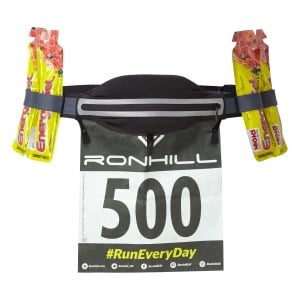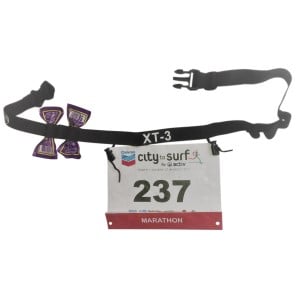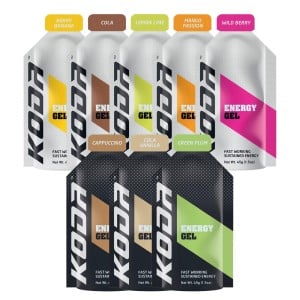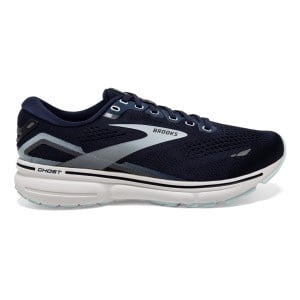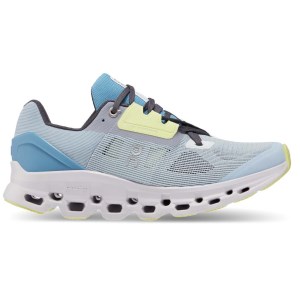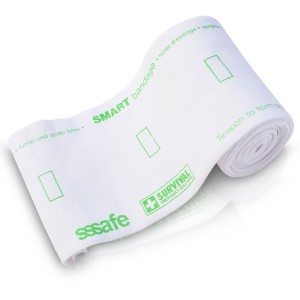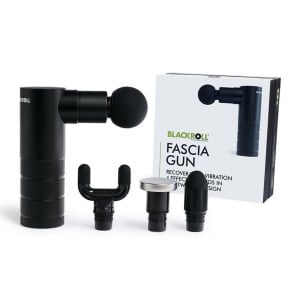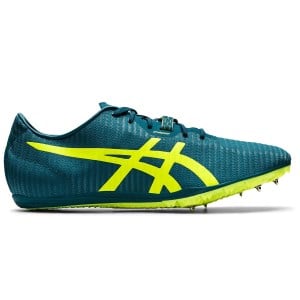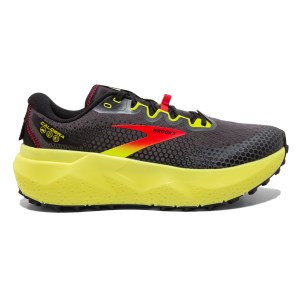Running Glossary: Your Complete Guide To The Lingo Of Runners
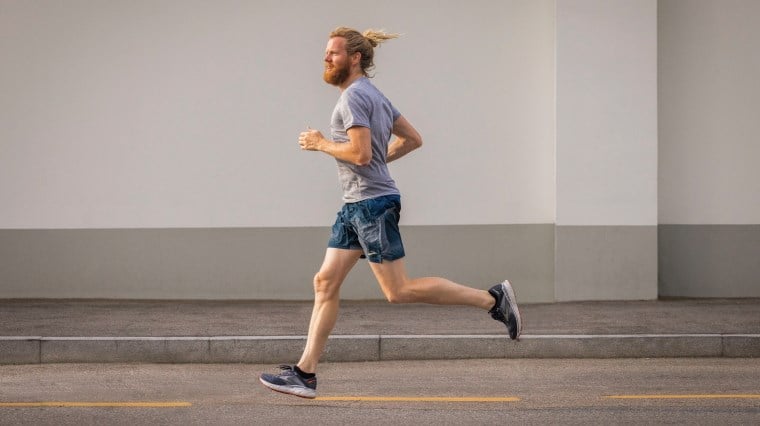
Runners virtually have a language all of their own to describe the nuances of what they love doing most, running!
In this running glossary put together by runners, for runners, we’ve demystified commonly used terms (and some a little less common) to describe the running terminology and jargon you may hear on the road, trail or track.
This is the one-stop for beginner runners who need to wrap their head around the foreign language in the running community.
You may have heard these words used by our shoe experts on the shop floor at Sportitude Running at Hindmarsh or Sportitude at Fullarton, during our running shoe reviews on the Sportitude YouTube channel, by members of your running club or even by your podiatrist.
From training and nutrition strategies, specific running workouts to foot types we take a deep dive into everything running from heel-to-toe.
Aerobic exercise
Endurance or cardiovascular exercise involving steady, repetitive movement over a relatively long period of time (e.g., brisk walking, long distance running, swimming, rowing, cycling), resulting in the increase of respiration rate and heart rate. This in turn boosts the oxygen concentration in your blood to supply muscles with energy and support the sustained activity.
The term aerobic means “with oxygen”. Aerobic exercise is ideal for building endurance.
Aid station
A checkpoint of a long distance race managed by volunteers which allows runners to refuel and rehydrate. Aid stations are setup on temporary tables, and may provide everything from basic needs like water to a bonanza of hydration and food including electrolyte drinks, energy bars, sandwiches and water-rich fruit like watermelon or grapes.
Aid stations help runners to sustain a higher level of performance through topping up their hydration and energy needs, without being weighed down by carrying this nutrition throughout the duration of the race. Food and drinks at an aid station are designed to grab-and-go – and with the right planning and aid station strategy, you can collect what you need without it slowing you down.
As a general guide, aid stations are usually provided every 5km for endurance races. Depending on the particular event, a half marathon commonly has 2 – 6 aid stations dotted along the course, and a marathon (see below) commonly has 8 – 12 aid stations. The major marathons for your bucket list and other large running events may have more aid stations to accommodate the vast number of participates.
Ultra marathons (see marathon) may not have any aid stations at all – which is in part why the mandatory gear list is so vital. This increases the challenge, with competitors having to carry all their nutrition and hydration without the additional support along the way. In other cases, ultra marathons have aid stations that not only act as a checkpoint to refuel and rehydrate, but as a stop where runners are encouraged to rest and recover or even sleep before continuing the race.
Anaerobic exercise
High-intensity exercise in short, quick bursts that requires immediate energy (e.g., sprinting, weightlifting, HIIT). As oxygen supply cannot meet oxygen demand, your body draws energy from your glycogen (stored energy) to fuel the movement. This increases the production of lactate (see below).
The term anaerobic means “without oxygen”. Anaerobic exercise is ideal for building strength and muscle mass.
BIB
A sheet of paper that you attach to your chest when running a race. It contains your registration/race number and an electronic chip that will track your time.
Tip: Many race belts are designed specifically to hold your bib (without needing a safety pin to attach it to your running clothing) alongside your running nutrition like energy gels (see below).
Burn out
The mental and physical fatigue experienced as a result of overtraining – when you are not resting and recovering adequately to support your training load. A burn out may cause a plateau in performance with symptoms including a lack of motivation, stress, sleeplessness, fatigue and lingering physical soreness and aches.
Cadence
The number of steps you take per minute (SPM) while running. It also may be referred to as your stride rate. Your cadence will be influenced by multiple factors, particularly your height, with taller runners naturally having longer strides and generally a lower cadence, covering more ground in less steps.
Carb-loading
A nutrition strategy that involves increasing the carbohydrates in your diet in the days leading up to an event to improve performance. Your body converts carbohydrates into a source of energy referred to as glucose (a type of sugar used for immediate energy). Excess glucose is stored as glycogen in your liver and muscles.
Topping up your glycogen levels through carb-loading allows your body to access this stored energy when your energy demands increase (e.g., endurance activities like running a half marathon, marathon or participating in a sports match).
Read Sports Nutrition: Healthy Carbs, Protein & Fats to learn more about nutritious ways to include carbohydrates in your diet and their role in your body.
Cross-training
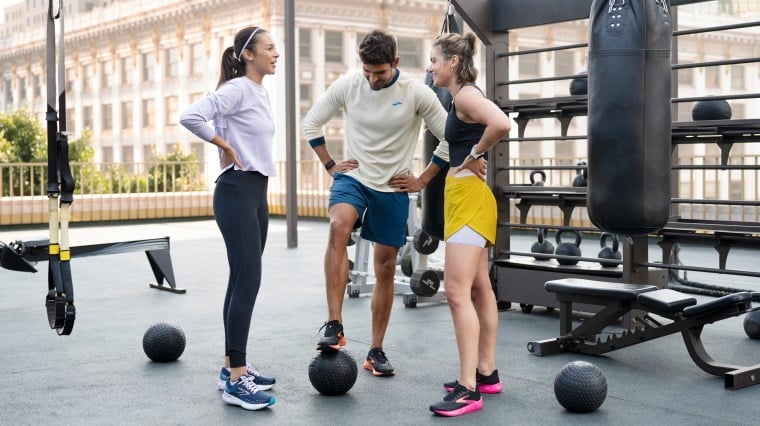
For runners, refers to creating a balanced training program by varying your workouts with exercises other than running. These could include other cardio exercises such as cycling and swimming to improve your overall fitness and heart health, improving your strength through gym workouts like weight training with dumbbell exercises and kettlebell exercises, or your flexibility through yoga and Pilates.
Cross-training makes you a stronger runner and has multiple benefits in allowing overused muscles to recover while working out muscle groups that are underused during running. It also supports your mental wellbeing by keeping your fitness routine balanced, fresh and invigorating.
Cooldown
The 5 - 10 minute period at the end of a running workout used to gradually transition your body back into a resting state to support recovery and encourage relaxation. Cooldowns may include reducing pace to easy jogging or walking, or performing low-intensity movement such as static stretches, foam rolling or yoga.
DNF
Did Not Finish – refers to a runner that has begun a race but does not run the race to completion. Multiple reasons may cause a runner not to finish including injury, illness or hitting the wall (see below).
DOMS
Delayed Onset Muscle Soreness – temporary aching or stiffness of the body caused by the inflammation of micro-tears in your muscle fibres. DOMS is a natural part of your training resulting from the cycle of muscle fibre breakdown and strengthening that occurs to allow you to adapt to a higher training load.
It’s often experienced 24 – 72 hours post-workout, particularly after long or intense training, or after workouts that your body is unfamiliar with that activate underused muscle groups.
Electrolytes
Minerals that have an essential role in the body including sodium (maintaining fluid balance, healthy nerve function), magnesium (deriving energy from nutrients, muscle relaxation, supporting bone health) and calcium (muscle growth and muscle contractions, maintaining healthy heart rhythm, supporting bone health).
Energy Gels
Sachets containing a fast-acting, easy to ingest form of carbohydrates for a convenient source of energy. Energy gels may also replenish electrolytes (see above) lost in sweat and are valuable as part of a hydration and nutrition strategy during high-intensity or prolonged training and racing (e.g. marathon, half marathon).
Energy gels can help sustain performance and speed up recovery. Their size makes them easily portable to attach to race belts, fit into a pocket of your running tights or in your running hydration pack.
Elevation
Refers to the vertical height of a geographical landmass above sea level, such as a hill or mountain.
Elevation gain: Also known as total ascent, cumulative elevation gain, vertical elevation gain (vert for short) or simply gain by the trail running community. The total sum of vertical distance you’ve gained during your run, hike, cycle or climb across your entire race, activity or day on the trail.
Elevation gain is typically measured in metres or feet. This measurement is calculated irrespective of elevation loss.
Elevation loss: The total sum of vertical distance descended during your run, hike, cycle or climb across your entire race, activity or day on the trail.
Elevation loss is typically measured in metres or feet. This measurement is calculated irrespective of elevation gain.
For example, if you’ve gained 500m in vertical height, descended 300m, gained another 200m in vertical height and descended another 100m, your elevation gain is 700m and the elevation loss is 400m for that activity.
Elevation gain: 500m + 200m = 700m
Elevation loss: 300m + 100m = 400m
Elevation profile: A type of line graph that displays a cross-section of your elevation gains and losses over a certain distance. The greater the elevation gained over a shorter distance, the steeper the line on the graph and the steeper the geographical landmass it represents.
Some high-end multisport GPS watches can display topographical maps and your elevation profile – providing valuable data to train for uphill running and to prepare for your next hilly marathon or ultra marathon (see marathon below).
Check out the Coros Vertix 2 Adventure multisport GPS watch to know more about your running data and the geographical features of the world around you.
Fartlek
Swedish for "speed play". It refers to variable pace running; a mixture of slow running, running at a moderate pace and short, fast bursts. Fartlek training is an unstructured and ‘creative way’ to increase speed and endurance, based more on feel rather than running for a designated time or distance.
It is an ideal running workout for runners of all fitness levels. Dividing the segments of your fartlek workout can be as easy as using mailboxes, street lights or trees as markers to identify when to change the pace to keep your training fun, varied and effective.
Foot strike
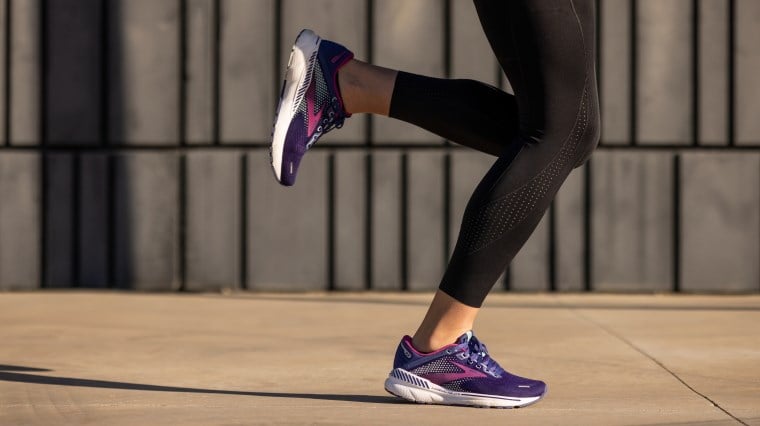
Refers to the part of your foot that first impacts the ground when running – heel strike, midfoot strike or forefoot strike, with heel (rearfoot) striking being the most common. Your foot strike will influence how impact forces are distributed throughout your body.
Heel striking: Also called ‘heel-to-toe’ running. Heel strikers land on their heel first, followed by the midfoot and forefoot in a forward rolling motion. Due to the increased braking forces and stress heel striking can cause through the shoe and runner’s body, many high mileage running shoes cater to heel strikers by reinforcing the rearfoot with durable rubber to provide cushioning and protect this strike zone on impact.
Forefoot striking: Also called ‘running on your toes’. Refers to a foot strike pattern where you land on the ball of your feet first. Depending on how exaggerated the forefoot strike is, the heel of the runner potentially won’t touch the ground during the stance phase (see running gait below) of the gait cycle.
Forefoot striking is generally reserved for elite sprinters that can tolerate this running form that prioritises speed, whereas an endurance runner will quickly discover that forefoot striking can increase risk of injuries to the Achilles tendon when sustained over a period of time.
Midfoot striking: Midfoot striking is considered the most ‘neutral’ form of foot strike, ensuring a more even distribution of weight by landing centred on the foot, with forefoot and rearfoot impacting the ground virtually simultaneously.
It’s important to note there is no inherently right or wrong foot strike – the main factor to consider is that you’re running comfortably and injury free with a running form that feels natural to you.
High mileage running shoes
Running shoes designed for long distance running, generally on footpaths or road. High mileage running shoes are durable to tolerate regular use for your daily training (clocking up 'high mileage') or endurance runs.
They typically provide higher levels or softer cushioning compared to more minimalist styles, with the trade-off being that they're heavier. Being protective, they provide shock absorption during repetitive, hard impacts on road surfaces, helping ward off fatigue and common running injuries like plantar fasciitis.
As the line between different categories of running shoes begins to blur, we're seeing a greater range of running shoes that meet the criteria of a high mileage running shoe while also ticking the boxes for runners seeking a lighter or more responsive ride.
HIIT
High Intensity Interval Training – A type of anaerobic exercise (see above) alternating between fast, explosive and high-intensity bursts of movement and short recovery periods of lower intensity or rest. (E.g., 20 second sprint, 40-60 seconds rest, 20 second sprint and repeat).
HIIT workouts have numerous benefits such as increasing your metabolism, muscular endurance and strength, burning calories fast, improving your cardio health and your VO₂ max (see below).
Hit the wall
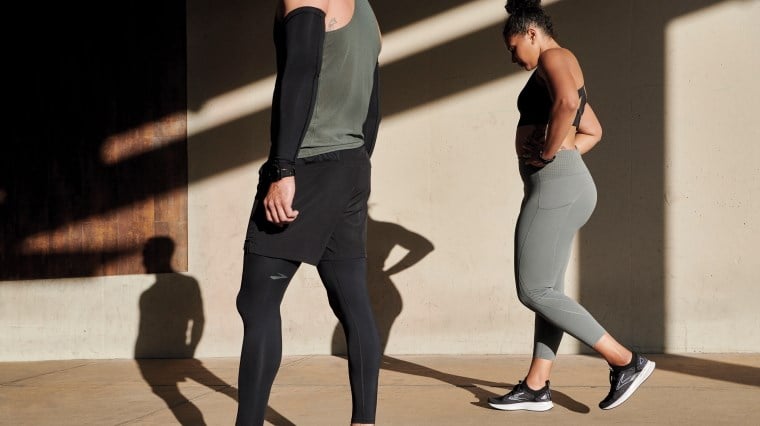
The sensation experienced during a race or training when your glycogen levels (stored energy) become depleted, and a feeling of fatigue engulfs you – resulting in physical and mental exhaustion.
Intervals
Refers to interval running or interval training; a type of HIIT (see above) workout that involves running at a fast, high-intensity pace (e.g., sprinting) for a short period, broken up by slightly longer, slower paced recovery periods of walking or jogging and repeating the cycle. The high-intensity period should be challenging – setting a snappier pace than fartlek or tempo runs and making the recovery periods in-between a necessity.
Interval training is a highly beneficial cardio exercise to both your aerobic and anaerobic systems and is an ideal training method for runners that are short on time.
Junk miles
Extra running that a runner may do in excess of what is needed to develop peak fitness. Junk miles do not have a specific purpose in a training plan and may contribute to overtraining, hitting the wall (above) or increased risk of injury.
Kick
The final sprint to get to the finish line. Preserving your energy throughout the race by staying honest to your pacing strategy can help you achieve a strong finishing kick.
Lactate
A natural by-product produced as a result of muscle cells breaking down glucose for energy – a process called glycolysis - particularly during anaerobic exercise (without oxygen). Glucose is converted into a molecule called pyruvate and in the absence of adequate oxygen, pyruvate is converted into lactate – a form of energy to fuel active muscles.
Lactate threshold (LT)
Also called aerobic threshold. The maximum intensity you can run without lactate building up in your blood at a quicker rate than it can be utilised and dispersed. Higher concentrations of lactate in the blood may cause the acidity of muscle cells to climb, resulting in a drop in performance with signs including muscle fatigue or even nausea – forcing your body to slow down and recover.
In terms of your maximum heart rate, your lactate threshold differs between individuals based on fitness level, with the lactate threshold for experienced or elite runners typically at 90% - 95% of their maximum heart rate or VO₂ max, and as low as 50% - 60% of maximum heart rate for people with a typically inactive lifestyle.
Training at your lactate threshold helps your body adapt to increased concentrations of lactate in the blood, allowing it to be cleared more effectively to sustain a higher level of performance for longer.
Marathon

A long distance running race spanning 42.195km (26 miles). Marathons are typically run on road surfaces but may also be run on a trail.
Depending on the particular marathon and its registration criteria (e.g., specific qualifying times), this epic race may include tens of thousands of participants from everyday athletes to elite competitors, and both walkers and runners.
See 6 Major Marathons For Your Bucket List for inspiration and insight on the world's most prestigious marathons.
Half marathon: A half marathon is half the length of a full marathon (21.1km / 13.1 miles), and a popular racing distance to cater to a wide variety of fitness levels. A half marathon provides an exciting challenge that's more approachable for many runners in terms of both difficulty and being able to fit training into your lifestyle.
Ultra marathon: An ultra marathon, also referred to as an ultra-distance race or ultra for short by the running community, is any running race longer than a marathon distance of 42.195km.
Ultra marathons may be distance or time based. Distance-based marathons typically fit into one of the following categories, being 50km (31 miles), 100km (62 miles), or 161km (100 miles), and are even longer in some cases.
Time-based marathons have outcomes determined by how much distance a runner can cover in a specified time, rather than the time taken to run a specified distance. These long distance races typically fit into one of the following categories, being 6 hours, 12 hours and 24 hours. Multi-day races are also a category of ultra marathon, run on consecutive days for adventure seekers that can't get enough of a challenge.
Unlike road marathons that commonly occur in cities and highly populated areas, ultra marathons typically take place in natural environments - often run on dirt trails or over mountainous landscapes - with challenges including uneven terrain, exposure to weather, elevation changes and natural obstacles. (See trail running below).
Mandatory gear
The essential equipment and apparel required, particularly in reference to an event like an ultra marathon (see under marathon above).
This may include running nutrition (e.g., energy gels, energy bars), hydration, clothing and additional layers (e.g., waterproof running jacket with taped seams, thermal top, running gloves), accessories (e.g., protective caps and headwear), safety equipment (e.g., whistle, survival blanket, headlamp) to allow you to navigate the race and environment safely.
Race organisers may provide a mandatory gear list to participants which is the minimum gear required for entrance. This will take into account the climate and weather, elevation, terrain and even the local wildlife (e.g., snakebite kit).
In the case of an emergency or injury, adhering to the mandatory gear list can be a matter of survival in unforgiving environments. It’s vital that you test that your hydration pack or hiking pack is capable of carrying all the items on the mandatory gear list that you’re not wearing prior to race day – and with room to spare to shed a layer as necessary.
Negative split
Running the second half of a race faster than the first half. This can be achieved through a pacing strategy that allows you to conserve energy throughout the first half of the race.
Offset
Also referred to as a heel-to-toe offset, heel-to-toe drop or heel-to-toe gradient. The variance in millimetres between the heel height and the forefoot height (see below) of a running shoe. The offset determines the degree of slope or the severity of the ‘ramp’ between the heel and forefoot of the shoe. (E.g., a shoe with a heel height of 24mm and a forefoot height of 12mm has a 12mm offset.)
A shoe with a 0mm offset has a consistent height from heel to forefoot, whereas a shoe with a 12mm offset offers a more severe incline from heel to forefoot. A 0mm offset may encourage a more ‘natural’ running form, while a higher offset can provide additional protection for endurance runs and to cater to heel strikers with a thicker, more cushioned rearfoot.
Heel height: The distance between the rearfoot of the shoe from its thickest point and the ground.
Forefoot height: The distance between the forefoot of the shoe from its thickest point and the ground.
Orthotic
A shoe insert customised to your feet by a podiatrist. It’s designed to elevate comfort, alleviate pain or provide guidance to manage biomechanical problems of the foot (e.g., to provide arch support to reduce the rate of overpronation).
Overstride
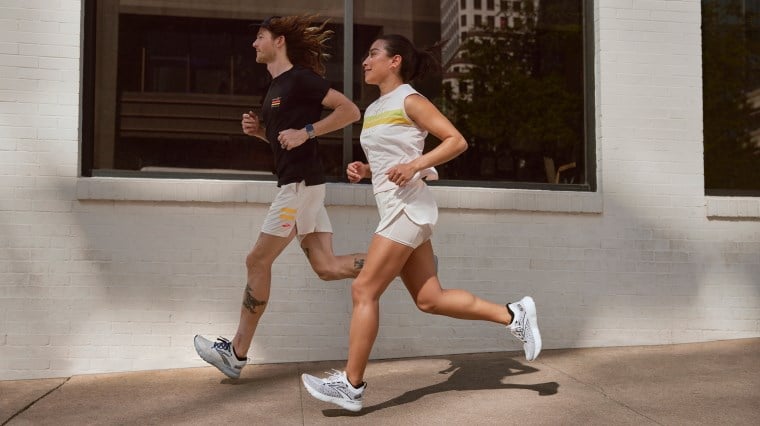
Refers to the running form where your foot strikes the ground in front of your body, as opposed to directly beneath your body underneath your hips or your centre of mass. It involves an overextension of the front leg, resulting in a longer step and increasing the braking forces acting on your body on ground contact.
Pace
The speed you are running. It is typically measured in minutes per kilometre or mile. Learning to ‘pace yourself’ is a valuable skill for runners to sustain a consistent rate of movement when training and racing to avoid burning out (see above) early.
PB
Personal Best - Running your fastest time over a specified distance or race.
Progression run
A run where intensity is gradually increased from an easy-going, slow pace to a fast, high-intensity pace. Progression runs are valuable as part of your speedwork (see below) and endurance training.
Pronation
The natural inward rotation of your feet that occurs on foot strike while weight-bearing during walking or running. Your foot type will determine your rate of pronation and the ability of your arches to absorb impact forces on ground contact.
Pronation can be broken down into three main categories:
Overpronation: Refers to the excessive inward rolling of your feet (on the side of the big toe). Severe overpronation may inhibit the ability of the arch of your foot to provide adequate impact absorption. This is common in runners with ‘flat feet’, causing the arch to collapse too aggressively on ground contact.
Whereas mild overpronators may tolerate a running shoe with neutral engineering, a severe overpronator is likely to require a stability shoe with support technologies (e.g., medial post) to provide guidance and manage the rate of pronation for comfort and injury prevention. When turning your shoe upside down, overpronators will see the most wear at the medial side (inner side or big toe side) of the outsole.
Supination (underpronation): Refers to the outward rolling of your feet. Supination is typically seen in runners with high arches, where a substantial amount of body weight is applied to the outer edges of the foot (on the side of the smallest toe) during foot strike. In a supinated foot type, the arch is raised too dramatically off the ground to provide adequate shock absorption. Supination is experienced in the minority of runners.
Supinators are usually best partnered with neutral running shoes with high levels of cushioning to assist in impact absorption. When turning your shoe upside down, supinators will see the most wear at the lateral side (outer or smallest toe side) of the outsole.
Neutral pronation: When the rate of pronation is essentially at a ‘sweet spot’, with your foot rolling inwards to a slight degree and the arch mildly collapsing or splaying out as a natural shock absorber. This provides an even distribution of weight on impact, rather than targeting it to the outer or inner edge of the foot and is considered the most biomechanically efficient form of pronation.
Neutral foot types don’t require additional support technologies and can run comfortably in neutral running shoes. When turning your shoe upside down, a neutral runner may see that wear is dispersed evenly across the outsole.
For a data-driven approach, you can sign up to a RunDNA shoe fitting service at Sportitude Running@Hindmarsh where our friendly and knowledgeable running shoe experts will assess your rate of overpronation from heel-to-toe to help guide your shoe purchases.
Positive split
Running the second half of a race slower than the first half.
Rabbit
Also known as a pacesetter, the ‘rabbit’ is an experienced runner paid to lead competing athletes in a middle distance or long-distance race. The goal is to set a fast but consistent and ‘honest’ pace – reducing the risk of deceptive tactical running influencing the outcome. In the case of world record attempts, pacesetters act as an ‘invisible’ rival to guide the pace of the competing athlete.
Pacesetters generally lead the pack at least for the first half of the race, typically hit even splits and then drop out of the race at a designated point.
Recovery
The strategy used to support the health and wellbeing of your body and mind as part of a training plan. This includes performing effective warm-up and cool downs to ward off injury, hydrating effectively for your body and the conditions, refuelling through wholesome sports nutrition and resting through quality sleep to support muscle strengthening and repair.
Recovery also includes supporting the health of your muscles through means such as foam rolling or using a massage gun and wearing recovery footwear to help rejuvenate your body and alleviate soreness.
Recovery isn't simply what you do after your workout - it's critical that you consider the bigger picture of your overall self-care, nutrition, hydration, sleep and muscle health to allow your body to adapt to an increased training load and improve your performance.
-
Blackroll Running Box - Runner Training & Recovery Set
-
Blackroll Fascia Massage Gun
-
OOFOS OOAHH Sport - Unisex Recovery Slides
Recovery run
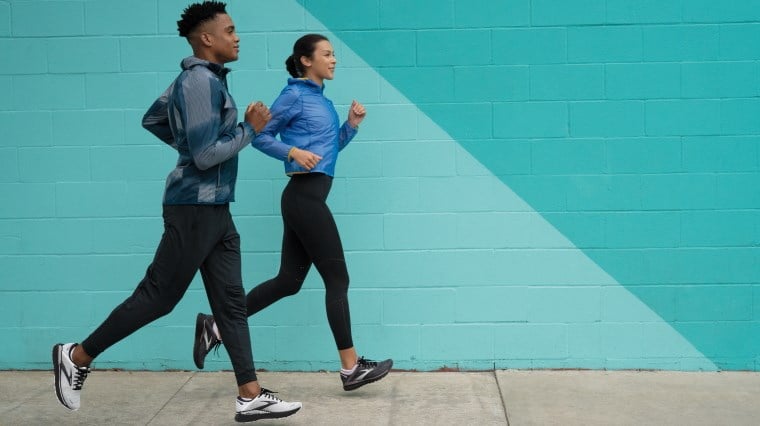
An easy-going, relatively short run or jog at a low intensity, generally within 24 hours after a high-intensity effort like speedwork, endurance training or racing. This functions as part of your 'active recovery' - ensuring muscles fibres are allowed to repair while training your body to run while already fatigued and increasing your weekly mileage.
Recovery runs can help increase the transport of oxygen-rich blood to help support the repair of worn-out muscles, without the need for extending your recovery period. Recovery runs improve your overall fitness and allow you to enjoy the positive benefits of running on your mental health without pressure.
Rest day
A day or multiple days of the week where you take a break from your usual running/workout schedule to help optimise recovery. For runners, rest days may include total rest as a 'true' rest day or low-intensity exercises such as yoga, Pilates, walking, swimming, cycling or light gym workouts to gently workout underused muscle groups while allowing overworked muscle groups to recover (see above).
Alongside warding off injury by avoiding overtraining, rest days are also valuable to your mental health to protect yourself from burning out and keep your training plan feeling fresh and rejuvenating as part of your cross-training (see above).
Runner’s high
The temporary feeling of euphoria experienced during aerobic exercise (see above) such as running. Recent studies show that endocannabinoids as opposed to endorphins (feel-good hormones) have the greatest role in achieving a runner’s high. They are particularly effective during consistent, moderate intensity efforts over a long distance (for a minimum of 1 hour, ideally 2 or more).
Endocannabinoids (endo, meaning produced naturally by the body) are tiny molecules that circulate in the bloodstream and are capable of crossing the blood-brain barrier, unlike endorphins which are larger/bulkier in size.
During exercise, levels of mood-boosting endocannabinoids (particularly anandamide or the “bliss molecule”) increase in the bloodstream and travel to the brain as a response to physical stress. Here they activate cannabinoid receptors that trigger ‘reward pathways’ - providing a feeling of joy and elation, deep calm or alleviated pain and anxiety.
A runner’s high can make you feel like you can “run forever”, but it comes easier to some runners than others and it’s not exclusive to running – cyclists, swimmers, rowers etc. - can all potentially chase a runner’s high during their sport.
Running gait cycle
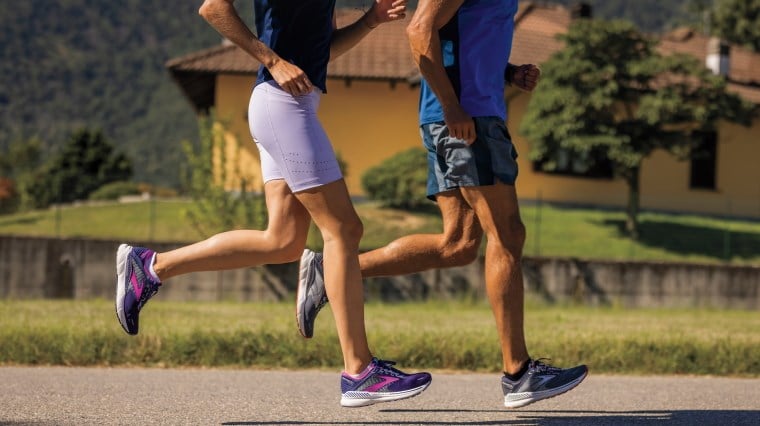
Refers to the two main stages of your running stride that form a repetitive pattern to move your body forward, as influenced by your personal biomechanics (the way you move).
The two key running phases are:
Stance phase: The weight-bearing or support phase starting when your foot firsts contacts the ground on foot strike (initial contact), followed by your arch splaying to provide stabilisation (midstance) to when your foot leaves the ground, typically heel first and finally the toes (toe-off / propulsion phase / pre-swing). In short, the stance phase is when your foot is in contact with the ground.
Swing phase: Immediately follows toe-off, when the foot is non-weight-bearing and lifted entirely off the ground swinging forward. The swing phase can be divided into the initial swing, midswing and terminal swing, ending when your foot strikes the ground. In short, the swing phase is when your foot is in the air.
The running gait cycle is complete when the one foot has performed these two phases, and then continuously repeats to achieve forward motion.
Singletrack
Refers to singletrack trails – trails that are narrow in width and therefore are only able to accommodate users in a single file.
Singletrack trails potentially will be shared by a variety of users including riders on horseback, mountain bikers, trail runners and hikers. It is essential that all users of singletrack trails practice good trail etiquette and use common sense, considering the requirements of other users and allowing them to pass as needed (e.g. stepping aside for horse riders).
Compared to wider trails, single track trails create a more immersive experience. Singletrack trails generally provide a natural surface underfoot like packed dirt as opposed to gravel or pavement. They weave around nature like trees or large rocks to preserve the environment, while getting you up and close with the flora of the area.
Shoe rotation
Having access to multiple types of running shoes, allowing you to select the right running shoe for the specific running workout.
Having a variety of running shoes in your shoe rotation has numerous benefits, including changing the load acting on your body to allow specific muscles to strengthen and others to repair, keeping your routine (and footwear) fresh as a mental benefit, and increasing the longevity of your running shoes.
Your shoe rotation may include a second pair of running shoes to wear on consecutive days (allowing the midsole to 'recover' and decompress back to its original state), a high mileage running shoe, interval/tempo running shoe, race day shoe and a trail running shoe based on the particular running workouts you enjoy.
For more information check out The Benefits Of Using Multiple Pairs Of Running Shoes.
Stack height
A measurement in millimetres of the height of the platform of the running shoe at its thickest point (generally the heel).
The stack height determines the distance between your foot and the ground, with lower stack heights (e.g. 0mm stack height = barefoot shoes) providing a close-to-ground feel. Higher stack heights create an elevated, more protected sensation by packing in more material or shock-absorbing foam underneath the foot.
If you're swapping high stack for low stack shoes or vice versa, it’s important that you gradually transition to allow your body to adapt safely and comfortably.
Streak
When you run consecutive days in a row for a specified period of time.
Speedwork
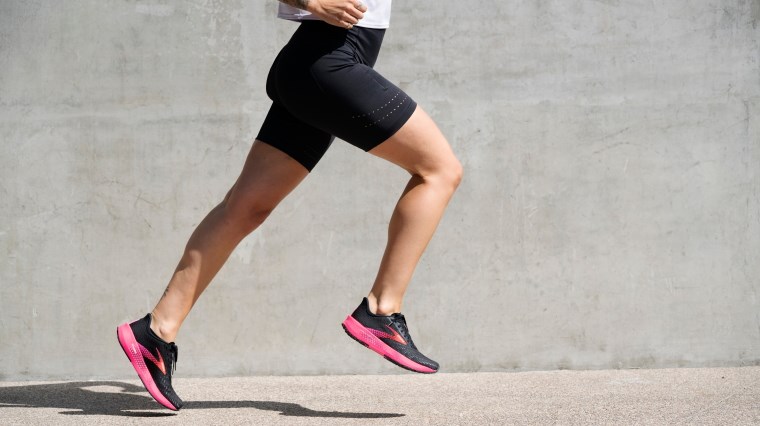
A broader term to describe a type of running workout that improves your body’s ability to run for longer at a higher intensity such as interval training and tempo runs.
Speedwork is typically designed to increase your oxygen efficiency and helps you adapt to running at a faster speed more comfortably. It’s performed at a faster pace than your comfortable running pace and may involve short but explosive bursts of speed.
Splits
Smaller sections of a race used to divide up the total time taken to complete the event, usually at 1km intervals. Split times refer to the amount of time it takes to run this specified distance.
Tapering
A training strategy involving the gradual reduction in exercise in intensity, distance and/or frequency in the days or weeks leading up to an event, particularly endurance races (e.g. marathon or half marathon).
Dialling back on your training gives your body more opportunities to recover effectively, allowing you to perform at your peak on race day with decreased fatigue and muscle soreness while having maintained your level of fitness (e.g., speed, stamina).
Tempo
The pace or speed of your run.
Tempo run
A type of speedwork that helps your body to adapt to running faster for longer and builds mental resilience. It is run at consistent pace that elevates your heart rate, surpassing the intensity of a easy running pace like light jogging.
The pace of the tempo run is different for everyone based on their cardiovascular fitness level and perceived exertion, but as a guideline it should be comfortably difficult – able to be sustained for a period of time and with the expectation that you will feel fatigued.
The sweet spot for a tempo run is where you’re breathing is increased but not overly laboured, and you can have a conversation in broken words. This level of effort should be sustained for at least 20 to 30 minutes.
Threshold run
A specific running workout performed at an intensity slightly lower than the state where your body can’t adequately eliminate the build-up of lactate in the blood. See lactate threshold above.
Track running spikes
Also called spikes. Refers to a specific type of track and field shoe designed for running and racing on track surfaces. These can be categorised as sprint track spikes, middle distance track running spikes or long distance track running spikes.
They vary greatly from trail running shoes or road running shoes and are characterised by having spike pins, typically made of metal, on the base of the shoe for traction on synthetic rubber track surfaces. The number of spike pins differs based on the distance the track running spike is designed for.
For more information check out What Shoes Should I Wear For Track & Field?
Trail running
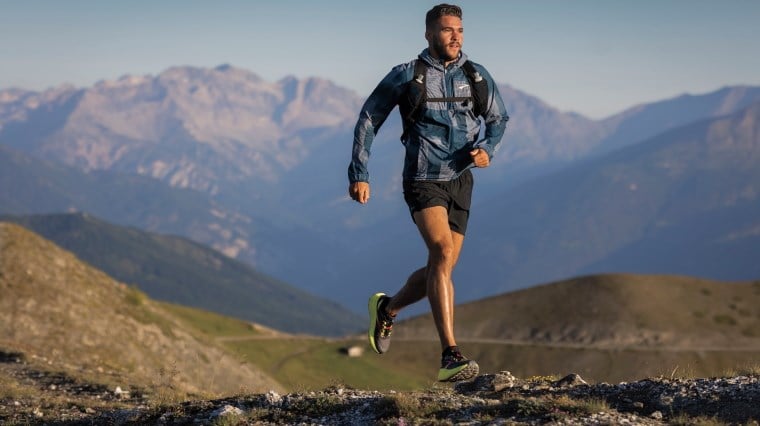
Off-road running workouts in natural environments. Trail running is performed on surfaces such as gravel, dirt, grass or rocky terrain. Trail runs can vary widely in their degree of technical difficulty based on elevation changes and type of terrain as well as how maintained the trails are.
Trail running has numerous physical benefits including increasing your proprioception (awareness of body in space), strengthening your muscle and joints and may decrease the impact forces acting on your body compared to road running by running on softer surfaces. They also have mood-boosting benefits, supporting your mental health by enjoying the feel-good vibes of the outdoors and soaking in the natural sights, scents and sounds.
It is recommended that you have a specific shoe or shoes in your shoe rotation (like the Brooks Caldera 6 above) for trail running, designed with the durability, protection and traction this particular running workout requires.
For more information check out Trail Running Shoes vs Road Running Shoes.
VO₂ max
The maximum amount (volume) of oxygen the body can utilise during exercise. It’s a combination of how much oxygen-rich blood your heart can pump and how efficient your heart and lungs are in extracting and utilising oxygen.
VO₂ max is also referred to as peak oxygen uptake, maximal oxygen consumption or maximal aerobic capacity.
Tip: Many sports watches allow you to track your VO₂ max to understand more about your internal training load.
Warm-up
The 5 - 10 minute period prior to your running workout to gradually (and literally) warm-up your muscles, raising your body temperature to prime your body for physical activity.
Warm-ups increase the circulation of oxygen-rich blood to muscles to support performance, promote flexibility (and therefore reduce risk of injury) and help transition your muscles (and mind) from a pre-workout state to an active state.
Warm-ups may include brisk walking / light jogging, or dynamic ('moving') stretches and exercises such as jumping jacks, forward / lateral leg swings and lunges that prepare the muscles you'll use for running for an increased range of movement and higher level of effort.
We hope our glossary helped boost your running vocabulary! If there's any running terms we missed that you'd like to know more about, please contact our Sportitude running experts.
We're passionate about all things running from the ground up and love helping you and all the running community across the globe reach your performance goals.
Happy running and we'll see you on the road!

